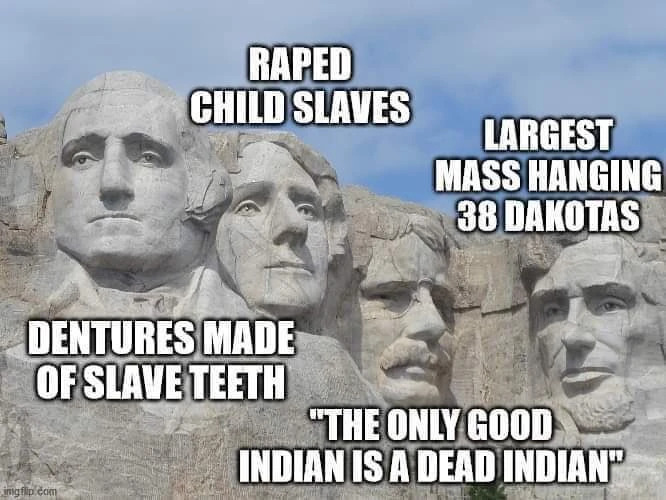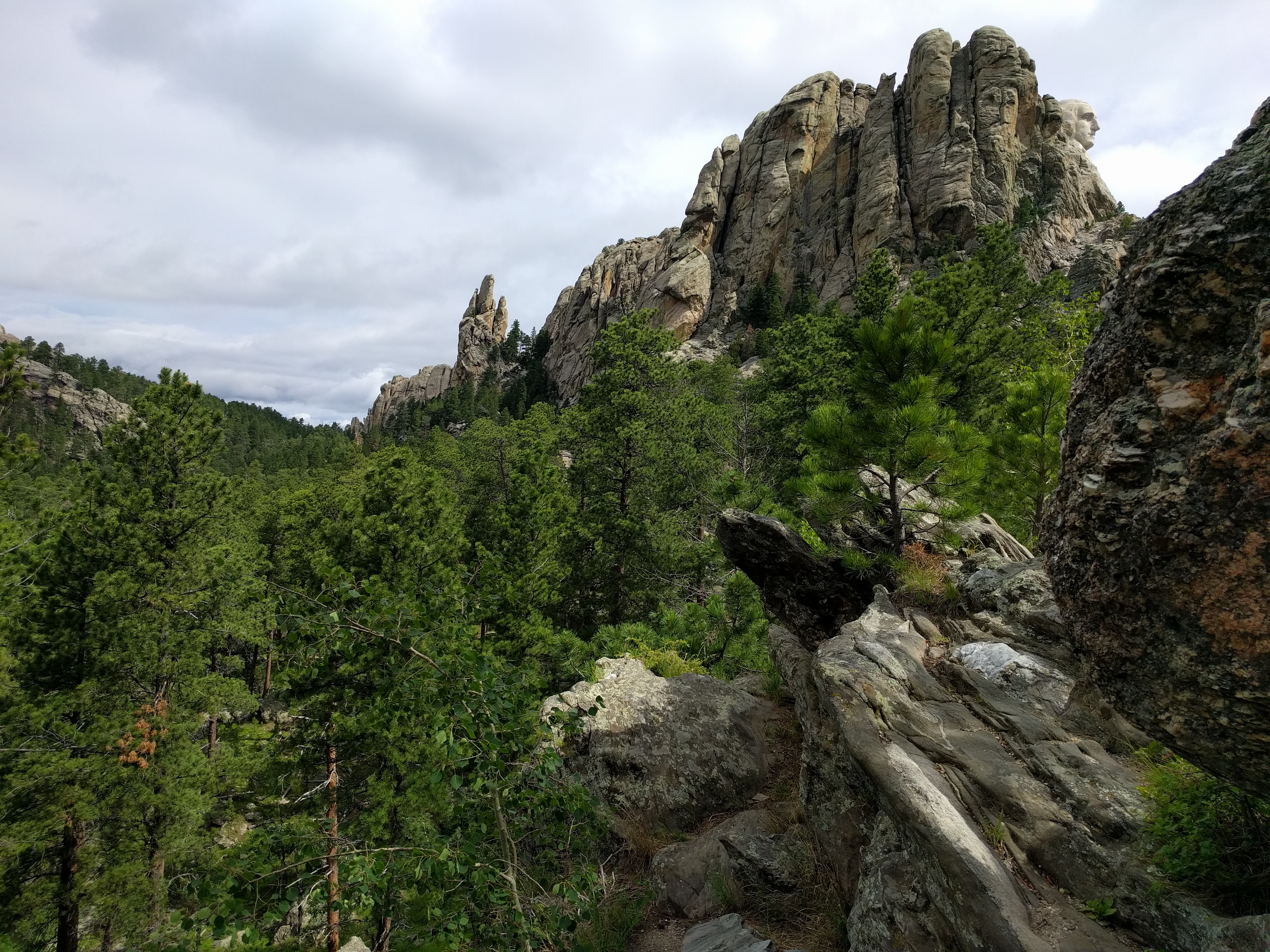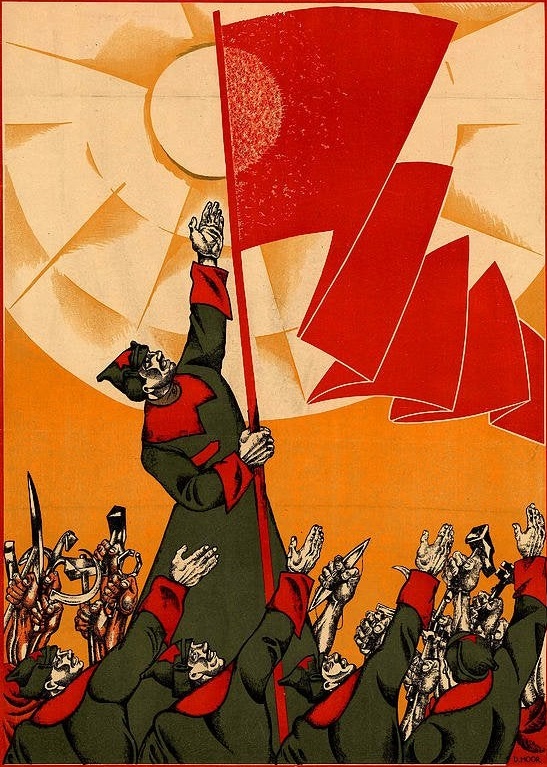The name of Six Grandfathers represents six ancestral deities of the Native Americans, personified as the six directions (cardinal + up and down.) The US and the Lakota Sioux were at war due to US expansion, but then they made a treaty in 1868 promising the Sioux exclusive use of the Black Hills and Six Grandfathers forever.
Of course, US history being what it is, they had another war in 1876, and seized the land in 1877, because of the gold rush. I couldn’t find any mention of bounty hunters, but it was a war.
Mount Rushmore was named after Charles E. Rushmore, but it was named by his guide Bill Challis. Charles asked Bill what the mountain was called, and Bill said it didn’t have a name, so he named it Mount Rushmore.
The monument at Mount Rushmore was inspired by a Confederate monument in Stone Mountain, Georgia. They got Gutzon Borglum, the same guy who made the other one, to be the sculptor for Mount Rushmore. Gutzon had ties to the KKK, who had funded the Stone Mountain monument, but wasn’t technically a member himself.
The original plan for Mount Rushmore was made by Jonah LeRoy “Doane” Robinson, who wanted it to represent “not only the wild grandeur of its local geography but also the triumph of western civilization over that geography through its anthropomorphic representation.” Ouch.
Interestingly, he didn’t plan to use presidents initially, but instead Old West characters such as Lewis and Clark, Red Cloud, Sacagawea, John C. Fremont, and Crazy Horse. Gutzon shot that down and opted for presidents instead. So basically if it weren’t for that guy, we could have had Native Americans on Mount Rushmore.
I couldn’t find any evidence of KKK funding for Mount Rushmore, but it did receive private funding, so that’s a possibility. Federal funding only game when Gutzon invited Calvin Coolidge to a dedication ceremony, at which he promised it.
So while the truth was almost as bad, this post isn’t entirely accurate. You don’t like it when the Republicans spread misinformation. Being a communist is no license to do the same.
Source: Wikipedia.
EDIT: After reading the article and Snopes page linked by ZombiFrancis…
- President Grant did order the army not to protect the natives. There were orders that the Black Hills shouldn’t be occupied, and he didn’t rescind those orders, but he did order the army not to stop miners from going in anyways.
- Bounty hunting was a thing, but there isn’t much evidence to point to it being a thing during this war. Much less funded by the government, as they already had soldiers to kill the natives with.
- Gutzon Borglum left the Stone Mountain project due to KKK infighting, and they weren’t exactly happy to see him work on Mount Rushmore instead, so it’s actually unlikely that they would have funded it - but still a possibility.
Thanks for this response. The truth matters.
Edit:
https://www.snopes.com/news/2020/07/29/kkk-mount-rushmore/
This is the snopes page on this actual meme.
The meme appears to be almost a full summary of this: https://thewellofdyersburg.org/2020/09/25/knowing-our-true-history-a-sacred-site-defaced/
Which does seem fairly well sourced.
Thanks, I’ll review this and incorporate what I can find in an edit.
Gutzon Borglum
Is this even a real name
Sounds like a character from Hitchhikers Guide. Hell it could even be a B-plot: Slartibartfast is trying to stop Gutzon Borglum from carving Zaphod Beeblebrox into a mountain he created.
Wow, I didn’t even notice how made-up that sounds.
John Gutzon de la Mothe Borglum.
His father, Jens Møller Haugaard Børglum (1839–1909), came from the village of Børglum in northwestern Denmark.
It’s an anagram for his true identity, Nutzog Murbolg.
'america has never been a racist country ’ -Nikkki Hayley GOP frontrunner
The best thing about that quote is that it was a response to the question “Is the GOP a racist party”
She is not the frontrunner.
I think she’s the frontrunner excluding those who shouldn’t be eligible and aren’t facing criminal prosecution.
Right
Someone should just blow up the faces of those ugly old fucks.
Taliban have experience in this area
Nothing a little TNT can’t cure.
The fight over the black hills / pine ridge is still very much an ongoing legal battle, with the US under Obama offering a bribe of 1.3 billion USD.
The Sioux have staunchly and admirably refused, and made it clear they will only accept the return of this stolen land. This in spite of all the manufactured poverty the US forces native peoples to endure.
Mount rushmore highlights a lot of hypocrisies of the US. They stole this land, defaced this sacred grandfathers monument and put their own colonizer heroes on top, and then have the audacity to criticize other countries over “hero worship”.

Big if true
Idk but here’s what I found on Wiki:
“Six Grandfathers” to “Mount Rushmore”
Mount Rushmore and the surrounding Black Hills (Pahá Sápa) are considered sacred by Plains Indians such as the Arapaho, Cheyenne, and Lakota Sioux, who used the area for centuries as a place to pray and gather food, building materials, and medicine. The Lakota called the mountain “Six Grandfathers” (Tȟuŋkášila Šákpe), symbolizing ancestral deities personified as the six directions: north, south, east, west, above (sky), and below (earth). In the latter half of the 19th century, expansion by the United States into the Black Hills led to the Sioux Wars. In the 1868 Treaty of Fort Laramie, the U.S. government granted exclusive use of all of the Black Hills, including Six Grandfathers, to the Sioux in perpetuity.
Six Grandfathers was a significant part of the spiritual journey taken in the early 1870s by Lakota leader Black Elk (Heȟáka Sápa, also known as “The Sixth Grandfather”), that culminated at the nearby Black Elk Peak, (Hiŋháŋ Káǧa, “Making of Owls”) U.S. general George Armstrong Custer summited Black Elk Peak a few years later in 1874 during the Black Hills Expedition, which triggered the Black Hills Gold Rush and Great Sioux War of 1876. In 1877, the U.S. broke the Treaty of Fort Laramie and asserted control over the area, leading to an influx of settlers and prospectors.
Among those prospectors was New York mining promoter James Wilson, who organized the Harney Peak Tin Company, and hired New York attorney Charles E. Rushmore to visit the Black Hills and confirm the company’s land claims. During a visit in 1884 or 1885, Rushmore saw Six Grandfathers and asked his guide, Bill Challis, the mountain’s name; Challis replied that the mountain didn’t have a name, but that it would henceforth be named after Rushmore. The name “Mount Rushmore” continued to be used locally, and was officially recognized by the United States Board of Geographic Names in June 1930.
References McKeever, Amy (October 28, 2020). “South Dakota’s Mount Rushmore has a strange, scandalous history”. National Geographic. Archived from the original on February 23, 2021. Retrieved February 24, 2023. Harmanşah, Ömür (2015). “Six Grandfathers: Landscapes and Power”. Place, Memory, and Healing: An Archaeology of Anatolian Rock Monuments. Routledge. p. 16. doi:10.4324/9781315739106. ISBN 978-1-317-57571-9. Morton, Mary Caperton (September 3, 2020). “Mount Rushmore’s Six Grandfathers and Four Presidents”. Eos. 101. doi:10.1029/2020eo148456. Retrieved February 24, 2023. Neihardt, John Gneisenau (1985). The Sixth Grandfather: Black Elk’s Teachings Given to John G. Neihardt. University of Nebraska Press. ISBN 978-0-8032-6564-6. Saum, Bradley (2017). “Black Elk”. Black Elk Peak: A History. Arcadia Publishing. ISBN 978-1-4396-6050-8. Saum, Bradley (2017). “Introduction”. Black Elk Peak: A History. Arcadia Publishing. ISBN 978-1-4396-6050-8. Saum, Bradley (2017). “Custer”. Black Elk Peak: A History. Arcadia Publishing. ISBN 978-1-4396-6050-8. Thomas, William (2010). Mount Rushmore. Chelsea House Publishing. p. 14. ISBN 978-1-60413-515-2. “BBC will showcase story of ‘Piano Man’”. Tampa Bay Times. March 2, 2006. Retrieved February 26, 2023. Koestler-Grack, Rachel A. (2005). Mount Rushmore. Abdo Publishing. p. 18. ISBN 978-1-61714-362-5. Saum, Bradley (2017). “Mountain Monument”. Black Elk Peak: A History. Arcadia Publishing. ISBN 978-1-4396-6050-8.
Found some more in the Black Hills page. No mention of bounty hunters.
European Americans increasingly encroached on Lakota territory. In order to secure safe passage of settlers on the Oregon Trail, and to end intertribal warfare, the United States government proposed the Fort Laramie Treaty of 1868, which established the Great Sioux Reservation west of the Missouri River and acknowledged indigenous control of the Black Hills. The treaty protected the Black Hills “forever” from European-American settlement. Both the Sioux and Cheyenne also claimed rights to the land, saying that their cultures considered it the axis mundi, or sacred center of the world.
During the 1875–1878 gold rush thousands of miners went to the Black Hills; in 1880, the area was the most densely populated part of the Dakota Territory.
The conflict over control of the region sparked the Black Hills War (1876), also known as the Great Sioux War, the last major Indian War on the Great Plains. Following the defeat of the Lakota and their Cheyenne and Arapaho allies in 1876, the United States took control of the Black Hills. Despite their forced relocations, the Lakota never accepted the validity of the US appropriation. They have continued to try to reclaim the property, and filed a suit against the federal government.
On July 23, 1980, in United States v. Sioux Nation of Indians, the Supreme Court of the United States ruled that the Black Hills were illegally taken by the federal government and ordered remuneration of the initial offering price plus interest, nearly $106 million. The Lakota refused the settlement, as they wanted the Black Hills returned to them. The money remains in an interest-bearing account, which, as of 2015, amounts to over $1.2 billion, but the Lakota still refuse to take the money. They believe that accepting the settlement would allow the US government to justify taking ownership of the Black Hills.[citation needed]
It’s a shitty monument too. If you find yourself there and underwhelmed, swing around and park in the area behind it. It’s so much nicer from the rear. Awesome landscape to explore back there.



Also, crazy horse is on the other side!
If we’re going to teach the horror of colonization of the Americas in school, I don’t think that time we did graffiti is very important.
Symbols are for the symbol minded.
It feels like there could be a point or two you could make here if you took the time to support your statements, or otherwise avoided delineating some “other” with whatever that last sentence was attempting to imply.









